- You are here:
- Home »
- Carroll
Tag Archives for " Carroll "
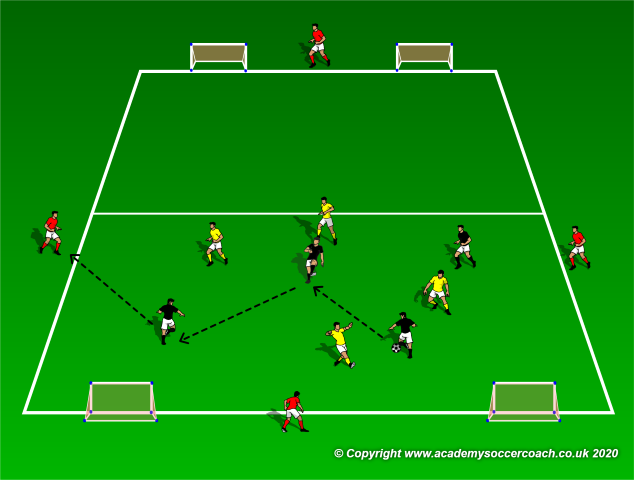
1v1 Scoring Knockout
By Matt Carroll –
While this is something that can definitely be seen as a technical workout, the high level of physical work players will experience will ensure that your player’s in-game physical shape will improve. In this drill, you will want to create a grid appropriate to the number of players available, taking into account the smaller the grid the more chaotic the game will be and the longer players will be stay “in”. On each side of the grid place a pug goal, the smaller the goal the higher level of difficulty and conditioning. Each player should be paired up 1v1 with one player on the ball and the other without.
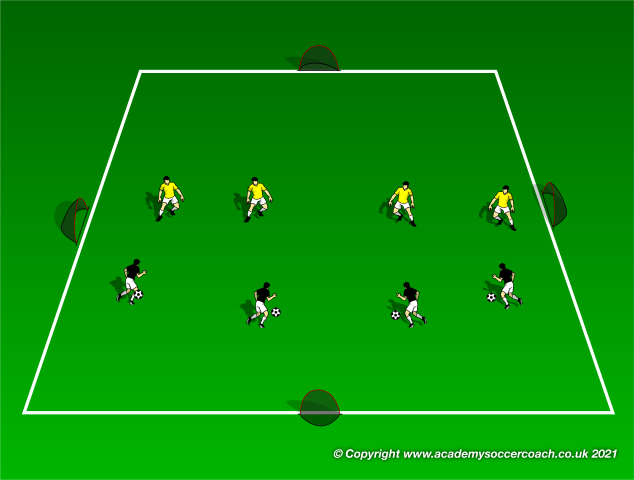
The game starts on the coach’s signal and immediately the player with the ball attempts to score on one of the four goals. The defending player attempts to win the ball and then score themselves. Any ball that goes out of bounds is a turnover and the player that did not touch the ball is allowed to dribble into the grid from wherever the ball initially left the grid. If the player scores they then leave the grid and now get recovery time.
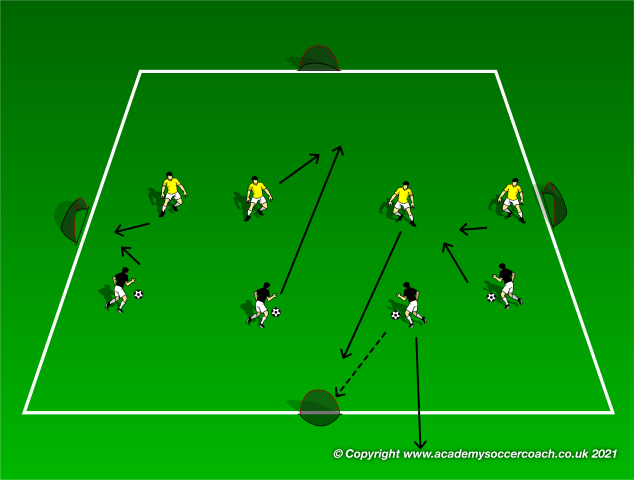
The player that was scored on now needs to find a pair and that pair becomes a triad where the same rules apply as before. If one of the players scores though it goes back to a pair with the player that has been in the group the longest starting with the ball. The game ends when there is only one player left in the grid who has not scored.
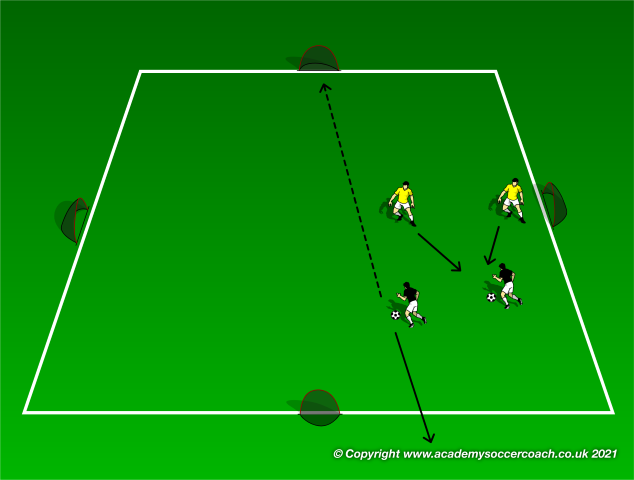
By Matt Carroll
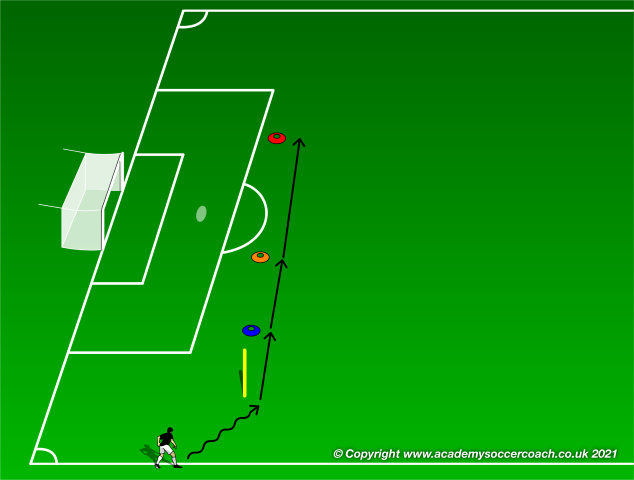
3-2-1 Technique Sprints
By Matt Carroll –
This is a great sprint workout that can be used 2-3 times a week to increase players’ max velocity and improve sprint technique. The key to speed training is to maximize technique and power and to minimize reps so that athletes are able to get to as near as 100% as they can for each repetition. Players should start with the basics, and then more advanced, and game-like, sprints can be utilized.
First, have players line up on the touchline with a cone 10, 20, and 40 yards apart.
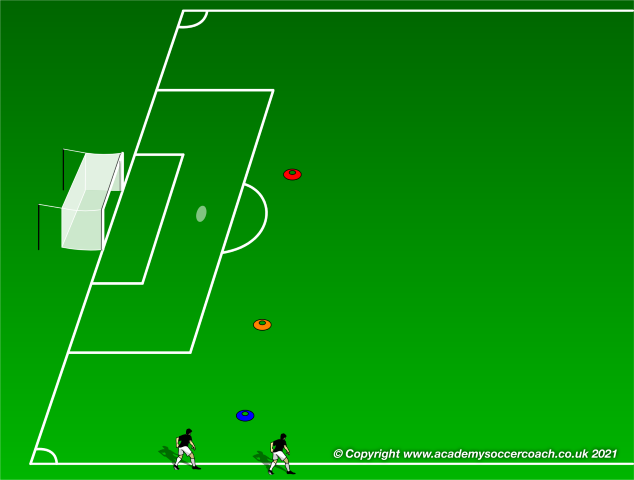
A good starting point is to have your athletes line up with their toes on the line, then have them fall forward. Whichever foot they reach out to catch themselves should then be the foot they drive off of in their sprint. Players should be coached against “rocking” where they initially step backward or rock back before starting their forward motion.
Another point to focus on is to have players “rip” their arms forwards and back at a 90-degree angle with hands reaching forward till they align with their chin, and back till they align with their hip.
The coach should start the drill with some type of starting signal, but it should be made clear to the players that they should go when they are ready, so they can focus on technique, and they should go at full speed. Players should have reps at 10 yards, 2 at 20, and one full 40-yard sprint. As players jog back after their sprint they should focus on slowing their breathing and the next rep should not start until athletes’ breathing has returned to normal. Again, the focus is speed, not fitness.
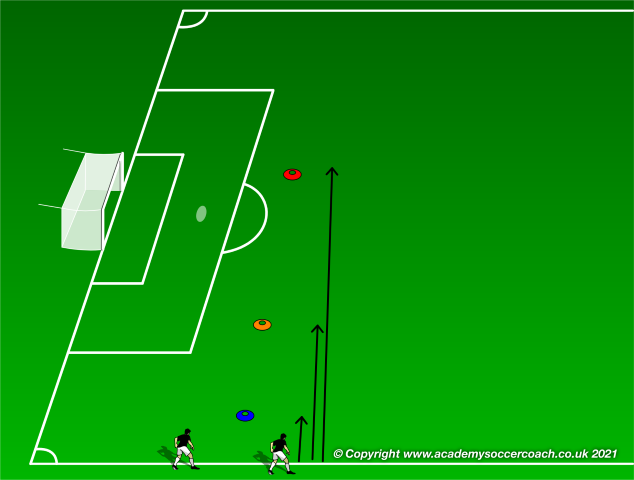
As players’ techniques begin to improve the sprints can move from stationary to situational. For example, players can be told to run diagonally to a coaching stick, then start their sprint once they reach the stick, utilizing the same technique they learned from the stationary start.

By Matt Carroll
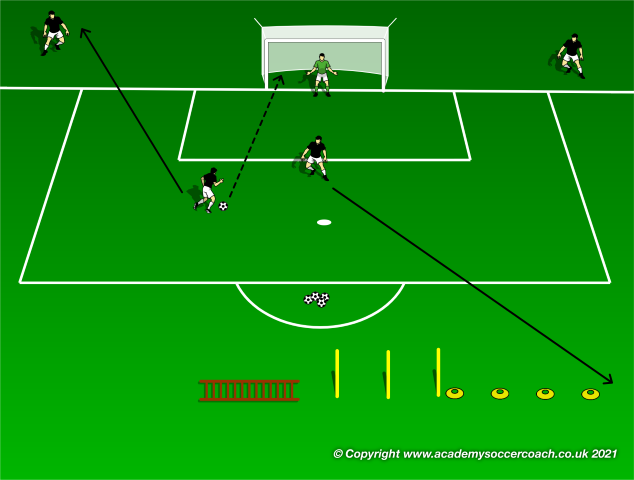
The Angus Drill
By Matt Carroll –
This activity has two parts, one is a competitive game with conditioning elements, the other is a conditioning drill with technical elements. It is a great game to play to improve the soccer-specific fitness of your players, but also the competitive drive of your team.
The game starts off with balls and the coaches at the D. The players line up on the end line at the point of each side of the 18. You can use one goalie, or alternate goalies every turn. Off to the side, away from the 18, there should be some type of age-specific technical/conditioning circuit set up. It should include ball work as well as agility work. This can be whatever the coach desires, but it should be something players will be able to repeat for the length of the entire game. A coach should be designated to this area to instruct, but also to monitor, and possibly limit player’s workloads.
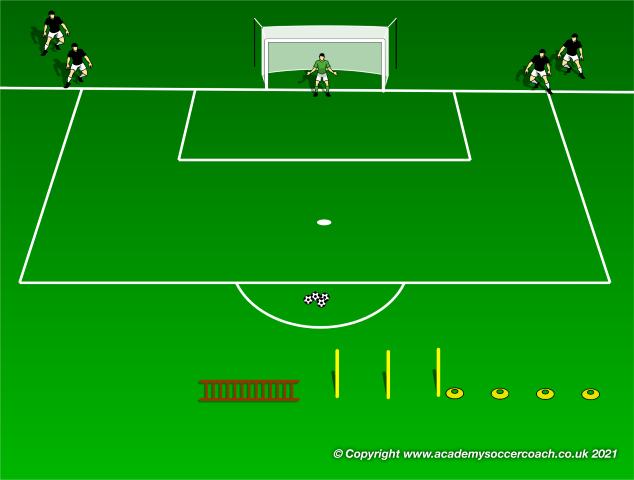
The game starts when the coach throws a ball anywhere into the 18 and the first player in each line then rushes onto the field to attempt to score. If one player is more technically gifted maybe you throw the ball to the less gifted player to challenge the other. Even strength players can have the dropped in the dead center.
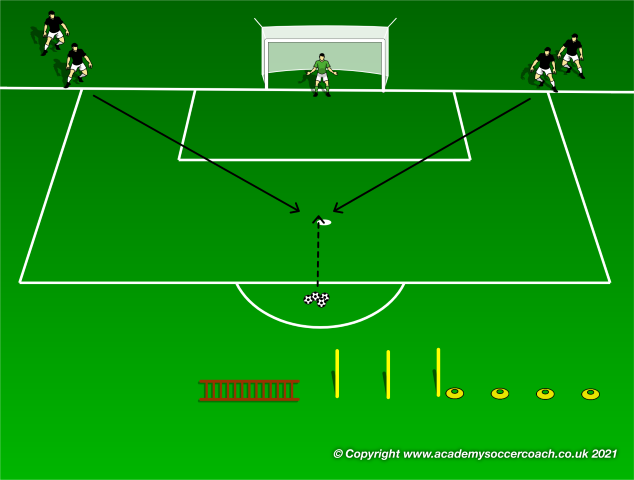
If the ball goes out, either it leaves the 18 or the shot is blocked or saved, both players retreat to the back of the line. You can vary this as well and make it that both players are sent to the conditioning circuit, and then just reset the drill until there is a winner as well. If a goal is scored, the scorer “stays on ”and goes to the back of the line. The loser goes over to the conditioning circuit until there is only one remaining player.

By Matt Carroll

The Michigan Drill
By Matt Carroll –
This is a common football conditioning drill that has been adapted to utilize soccer specific elements so that there is a level of technical work that is included on top of the conditioning work. To set up the drill coaches should start at a corner flag and put a new cone every 5 feet on one touchline until half. On the opposite touchline they should place a cone that is in the identical spot to a cone on the other side. It may help to color code these so every other cone is a different cone.
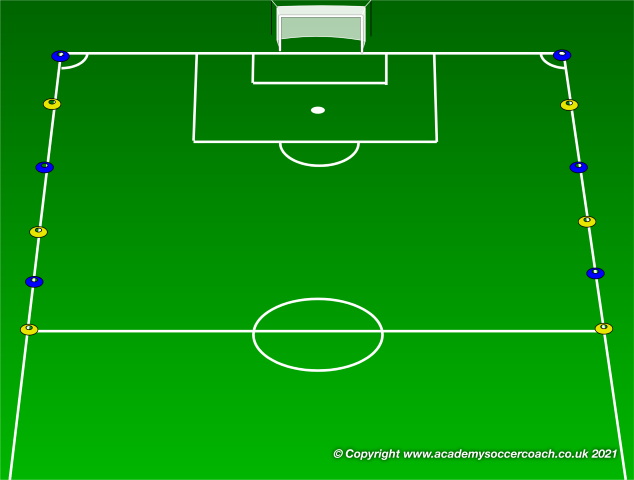
Have players line up at the corner flag with a ball. On the coach’s direction the first player begins to sprint with the ball towards the opposite touchline. When they get about halfway the next player can go.
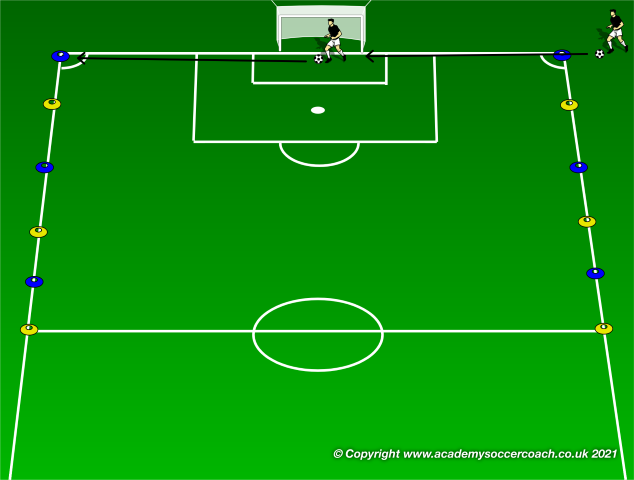
Once the players reach the cone they should roll the ball over with the sole of their foot until they reach the next cone. They then alternate feet, again with the sole, rolling the ball backwards, and backpedaling, until they reach the next cone. Once they reach the cone on the near touchline they again roll the ball over to the next cone and then sprint. Repeating until they have completed every line.
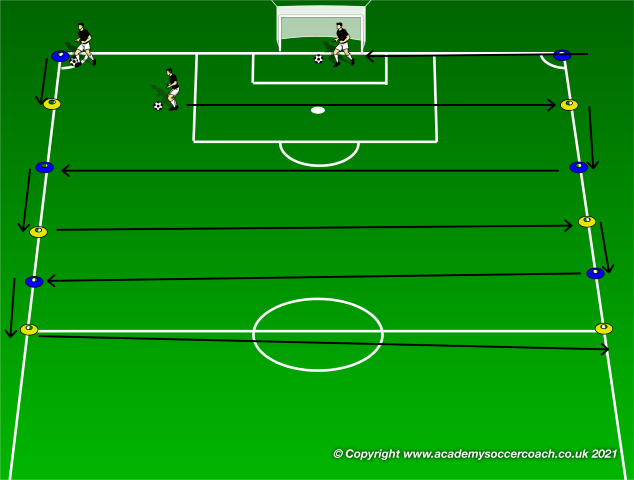
By Matt Carroll
